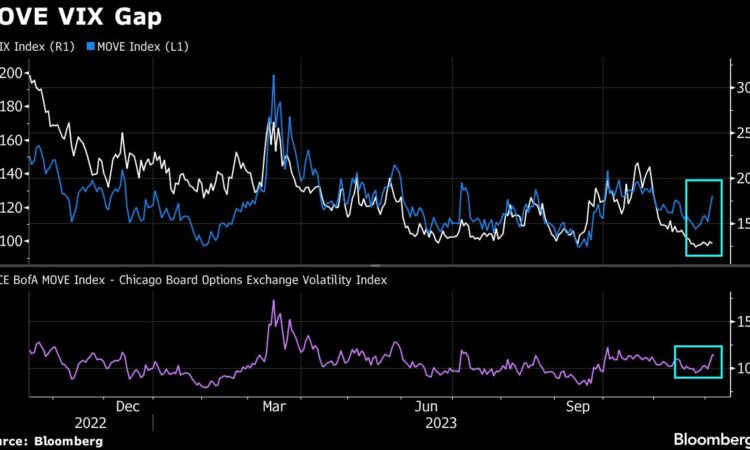
(Bloomberg) — US equity futures were steady Friday as traders awaited a pivotal US jobs report for more evidence of whether the labor market is cooling fast enough for the Federal Reserve to cut interest rates. Bonds slipped.
Most Read from Bloomberg
Contracts for both the S&P 500 and the Nasdaq 100 indexes were little changed after enthusiasm about artificial intelligence and Big Tech prospects lifted the two benchmarks by 0.8% and 1.5%, respectively, on Thursday. Treasuries wavered before the jobs report, with the 10-year yield rising back to 4.18%, after falling from 4.25% at the start of the week.
Friday’s nonfarm payroll report is crucial for traders evaluating whether bets on dramatic Fed policy easing next year are justified — or have gone too far. Buoyed by signs that inflation and wage growth are cooling, traders have ignited bets that cuts of at least 1.25 percentage points are in store over the next 12 months. That’s more than twice as much as Fed officials themselves, who while signaling they’re likely done raising rates have also been quick to caution that any talk of cuts is premature for now.
“There is a more sanguine view on 2024, the feeling that the battle against inflation has been won and interest rates will come down. The question now is how quickly,” said Jerry Thomas, global CIO for equities at Sarasin & Partners, “We have interest rates that are quite high relative to where people think inflation will go, which means all eyes are on the jobs data.”
Payrolls probably grew by 183,000 last month, after increasing 150,000 in October, while the unemployment rate held steady at 3.9%, according to the median forecast of economists surveyed by Bloomberg.
Fund managers pulled $4.8 billion from Treasuries, the biggest weekly outflow since August 2022, in the run-up to the labor market report, according to EPFR Global data.
Bond Traders Racing Ahead of Fed Face Reality Check on Jobs Data
The resolution of the United Auto Workers strike in the US will boost November’s nonfarm payrolls, but the weaker household survey will be more revealing of rapidly cooling conditions in the labor market, according to Anna Wong and Stuart Paul at Bloomberg Economics.
“It’s harder for job seekers to find work, and longer stints of unemployment usually lead to persistent increases in the unemployment rate later,” they wrote in a report. “Our view is that a recession likely began in October.”
Elsewhere, Europe’s Stoxx 600 Index added 0.4%, keeping the benchmark on pace for a fourth week of advances.
In currency trading, the dollar was mixed against major peers. The yen erased an advance that brought it to its strongest level since August amid fuel speculation the Bank of Japan will start lifting its sub-zero benchmark rate soon.
In commodities, oil advanced, but remained on course for the longest weekly losing streak since 2018 on concerns about a global glut. Gold headed for the first weekly drop in four weeks.
Key events this week:
Some of the main moves in markets:
Stocks
-
S&P 500 futures were little changed as of 6:09 a.m. New York time
-
Nasdaq 100 futures were little changed
-
Futures on the Dow Jones Industrial Average were little changed
-
The Stoxx Europe 600 rose 0.4%
-
The MSCI World index was little changed
Currencies
-
The Bloomberg Dollar Spot Index was little changed
-
The euro was little changed at $1.0785
-
The British pound fell 0.1% to $1.2578
-
The Japanese yen fell 0.3% to 144.53 per dollar
Cryptocurrencies
-
Bitcoin was little changed at $43,391.01
-
Ether fell 0.5% to $2,359.03
Bonds
-
The yield on 10-year Treasuries advanced three basis points to 4.18%
-
Germany’s 10-year yield advanced five basis points to 2.24%
-
Britain’s 10-year yield advanced seven basis points to 4.04%
Commodities
This story was produced with the assistance of Bloomberg Automation.
Most Read from Bloomberg Businessweek
©2023 Bloomberg L.P.
